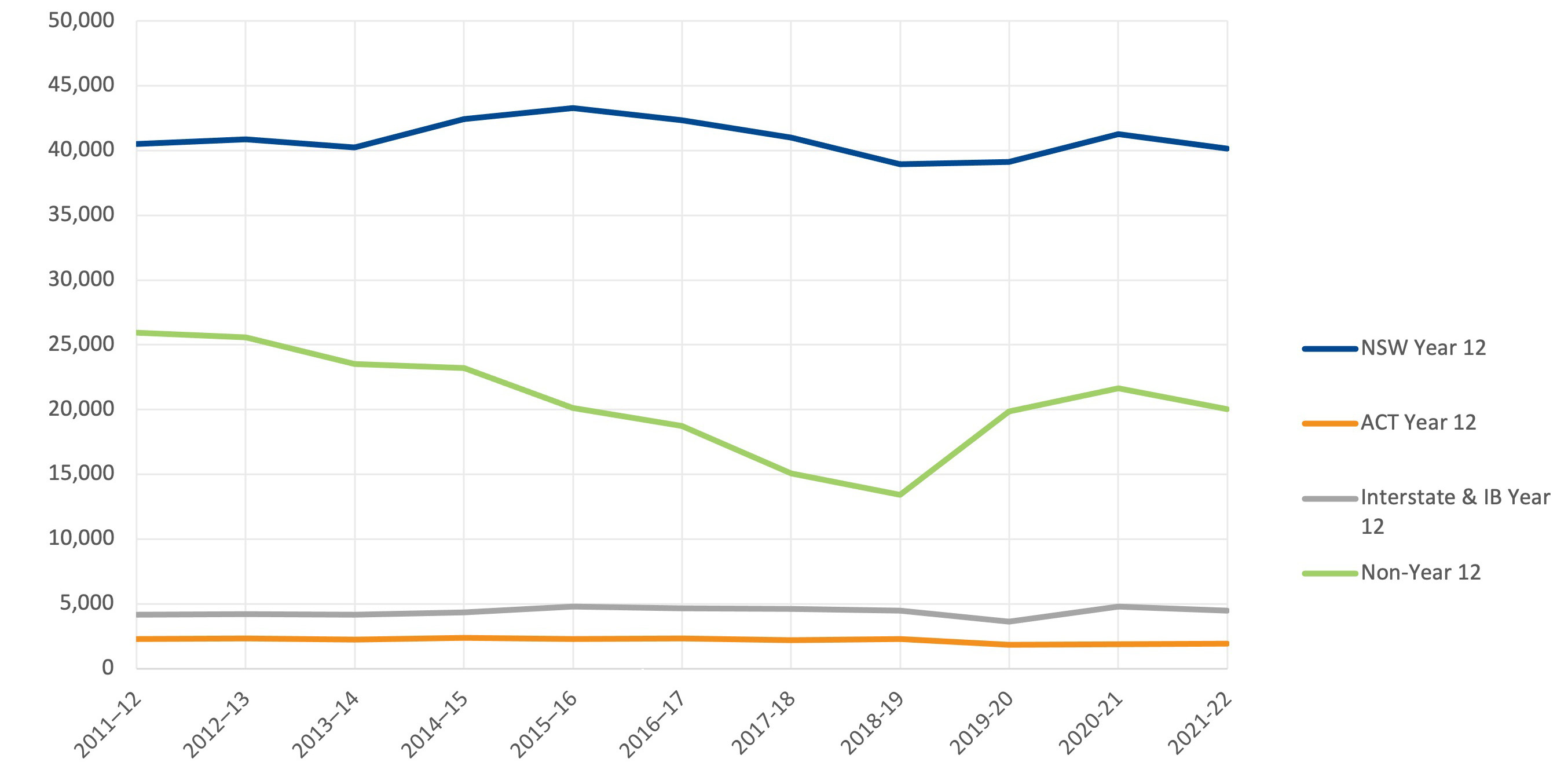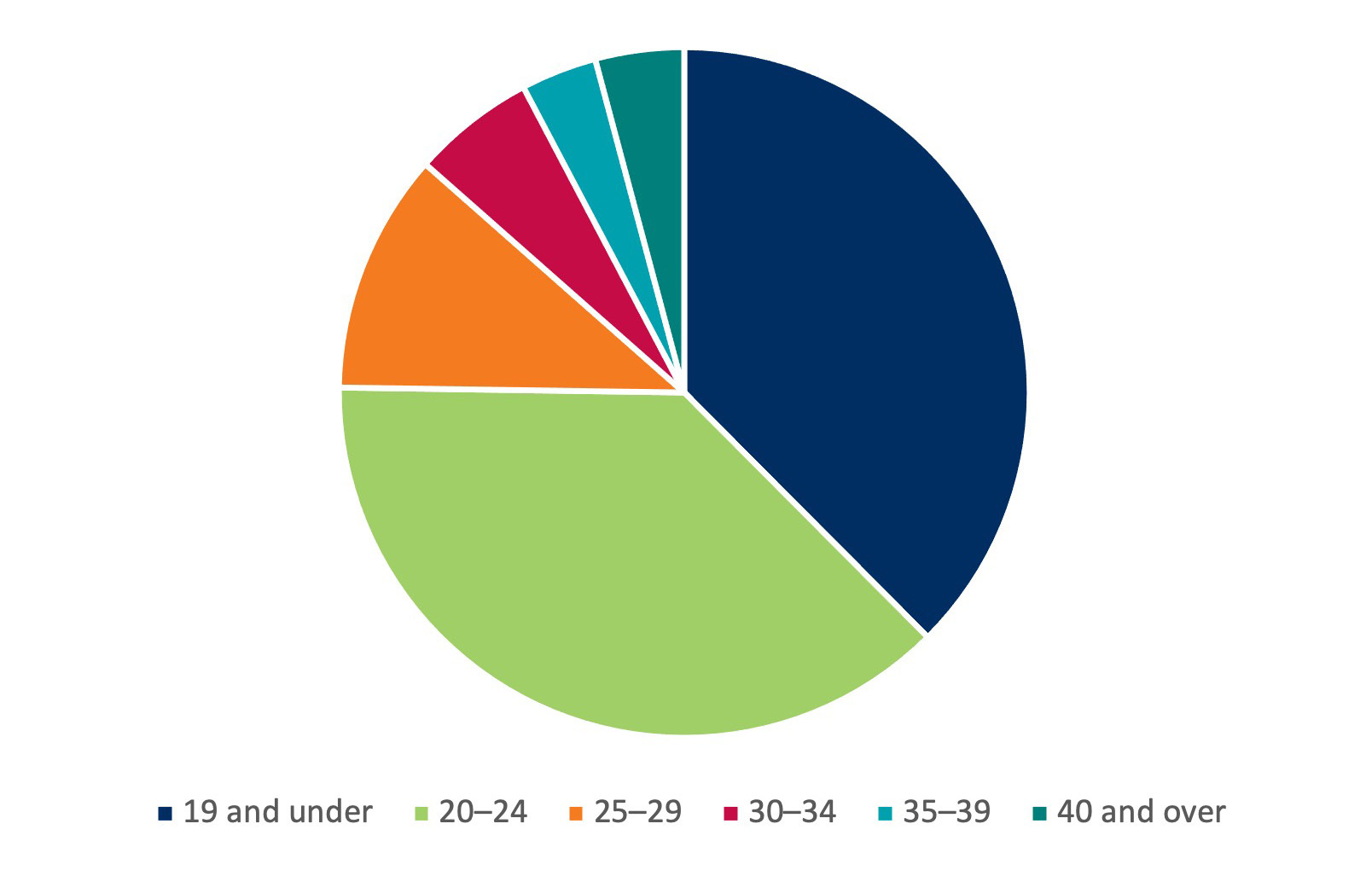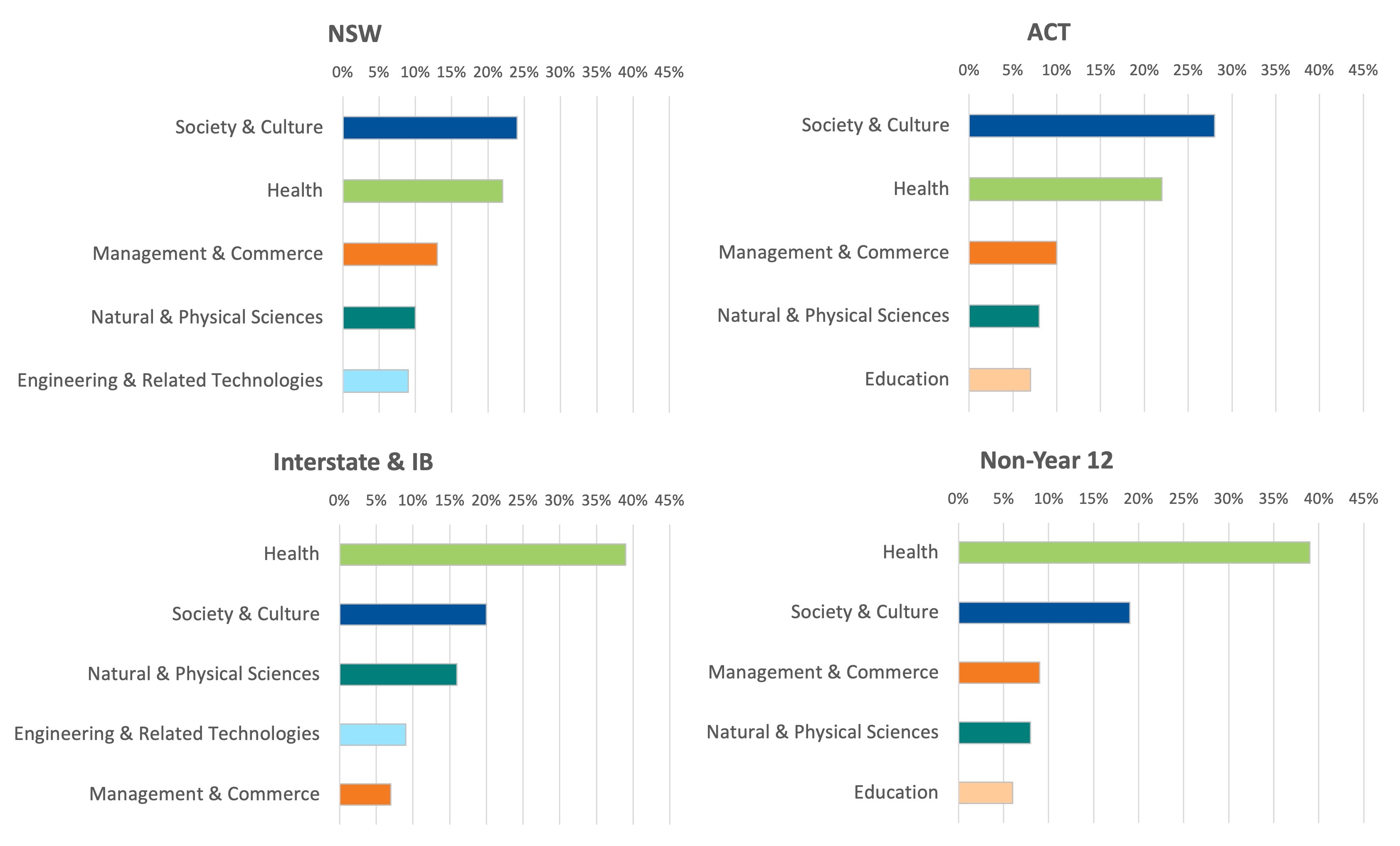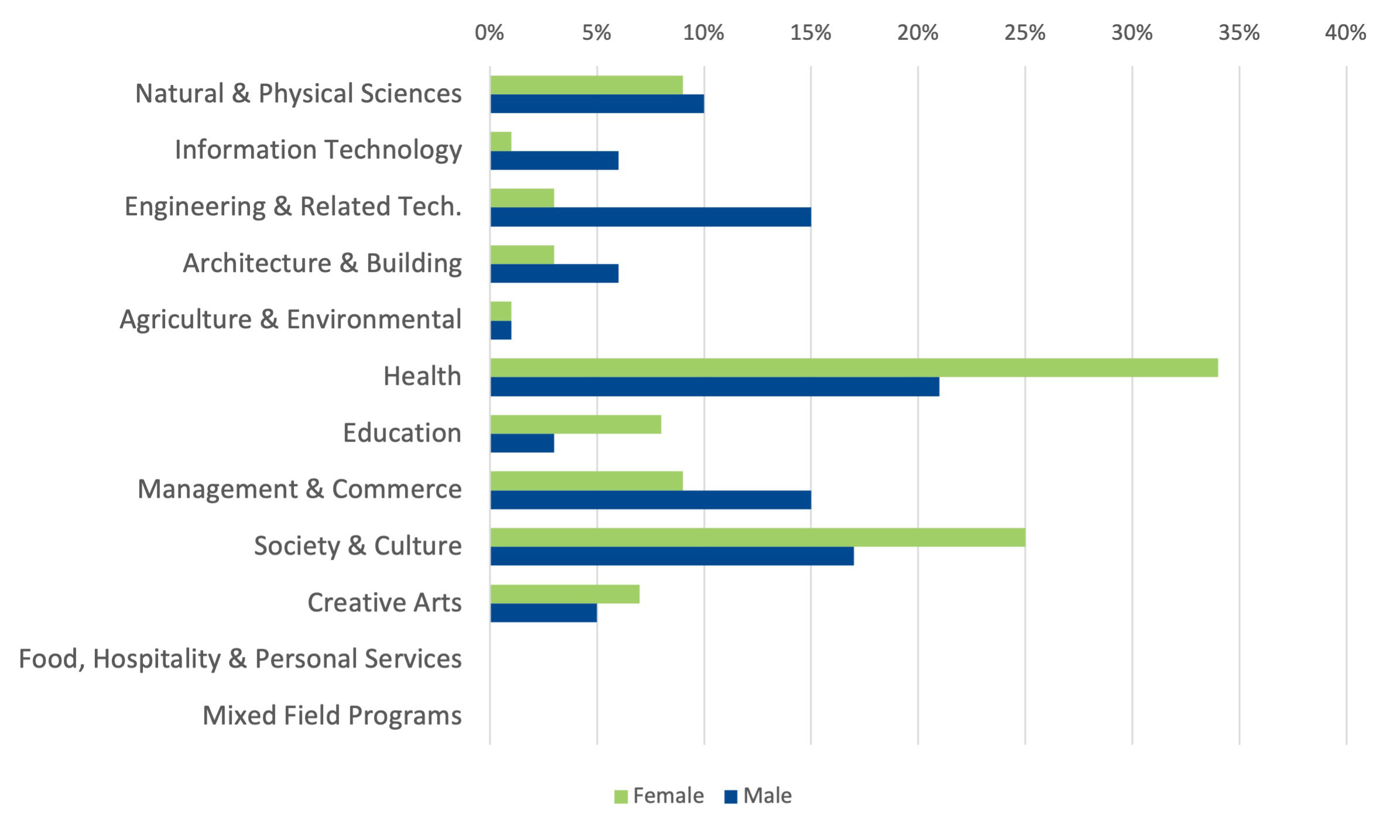08 Oct 2021
Statistics
Domestic undergraduate application statistics at early bird closing 2021
Applications for tertiary study in 2021–22 opened on Wednesday 1 April 2021 and early bird applications closed at midnight on Thursday 30 September 2021. (Students can still apply after this date, but they pay a higher processing charge.)
UAC received 66,622 domestic applications for undergraduate study in the first six months of the 2020–21 admissions year, 2,980 (4.3%) less than by early bird closing last year.
Download all the early bird closing statistics
Applications by applicant type
Applicants are divided into four types: NSW Year 12s, ACT Year 12s, Interstate and International Baccalaureate Year 12s, and non-Year 12s.
Applications at early bird closing by applicant type: 2011–12 to 2021–22

Gender analysis
The gender split of applicants continued to be similar to that of previous years: 58% of Year 12 applicants were female, while 60% of non-Year 12 applicants were female. From last year this is an increase of one percentage point for Year 12 applicants and no change for non-Year 12 applicants.
Age analysis
As in previous years, almost all Year 12 applicants were 19 years old and under (99.7%). Around 75 per cent of non-Year 12 applicants were 24 years old and under.
The breakdown by age group for non-Year 12 applicants is shown in the following chart.
Non-Year 12 by age group: 2021–22

First preference analysis
Domestic undergraduate applicants can choose up to five course preferences. Their first preference is the course they would most like to study.
First preferences by field of study and applicant type
The top five fields of study listed as first preferences by NSW and ACT Year 12 applicants were almost identical. Both groups had most first preferences in either Society & Culture or Health.
For non-Year 12 and interstate and International Baccalaureate Year 12 applicants, most first preferences continued to be in Health, followed by Society & Culture.
Overall, Health has again taken the top spot as the favoured field of study, with 28 per cent of early bird applicants listing it as their first preference. Society & Culture came second, receiving 22 per cent of first preferences across all applicant types.
Field of study by first preferences and applicant type

First preferences by field of study and gender
Both females and males had most first preference courses in Health, as it was last year. Similarly, like last year, the spread of first preference courses across fields of study was more even for males than for females.
Over half of female applicants listed their first preference course in either Health (34%) or Society & Culture (25%). In contrast, popular fields of study for males included Health (21%), Society & Culture (17%), Management & Commerce (15%), and Engineering & Related Technologies (15%).
Compared with males, a smaller proportion of females had first preference courses in Engineering & Related Technologies, Management & Commerce, and Information Technology.
Field of study of first-preference courses by gender: 2021–22
